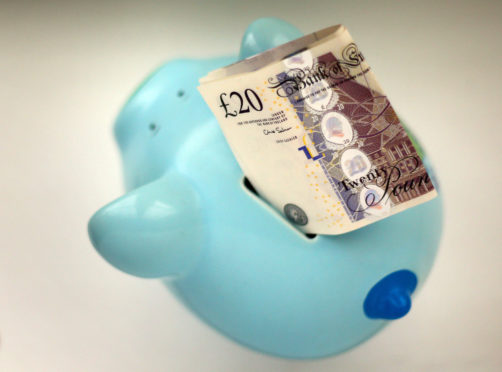
Tax and pensions changes are coming into effect as the new financial year gets under way from Saturday – meaning people may have more money coming in and perhaps more going out.
More than 30 million people are set to benefit from the increase to the personal allowance and higher rate threshold.
The tax-free personal allowance has been increased to £12,500 for 2019-20, from £11,850 previously, meaning an extra £130 for the typical basic rate taxpayer.
People do not have to pay income tax on money earned below this amount.
The higher rate threshold has also been increased – to £50,000 – meaning an extra £495 for the typical higher rate taxpayer.
Workers will also benefit from an increase in the National Living Wage from £7.83 to £8.21 from April, helping around 1.8 million people.
A full-time worker on the National Living Wage will earn an extra £690 over a year.
The National Minimum Wage has also been increased, to £7.70 per hour for 21 to 24-year-olds and £6.15 per hour for 18 to 20-year-olds.
Taken together with the National Living Wage, 2.1 million people are set to get a pay rise, the Treasury said.
The Treasury said a fuel duty freeze for the ninth year in a row and increases to work allowances in Universal Credit will go towards helping families with the cost of living.
People saving into a workplace pension who are only paying in the minimum amount allowed will see more money going out of their pay packets as minimum contributions have increased from April 6.
Ten million people have already been automatically enrolled into workplace pensions.
A total minimum contribution of 8% of qualifying earnings must be paid into pension pots, of which employers must contribute at least 3%, with the remaining 5% made up by staff.
Previously, total minimum contributions were set at 5%.
Hargreaves Lansdown calculates the increase could mean an average worker sees an extra £30 leave their April pay packet to cover the cost of pension contributions.
But while this may put an added squeeze on incomes, in the longer term the move could make employees much better off.
Hargreaves Lansdown calculates the rise could mean an extra £55,000 sitting in a 22-year-old’s pension pot by the time they retire.
Yvonne Braun, director of long-term savings policy at the Association of British Insurers (ABI) said: “Automatic enrolment has transformed pension saving, bringing millions more workers into the savings habit.
“Contributions from your employer are like a deferred salary increase, helping towards a more financially secure retirement.
“Pension saving can often seem daunting, especially when you cannot touch the money for some years, but the earlier you start saving, the more you will have in retirement.”
Financial Secretary to the Treasury Mel Stride said: “Our Budget was unashamedly for the strivers and the workers who keep the country going.”

Enjoy the convenience of having The Sunday Post delivered as a digital ePaper straight to your smartphone, tablet or computer.
Subscribe for only £5.49 a month and enjoy all the benefits of the printed paper as a digital replica.
Subscribe